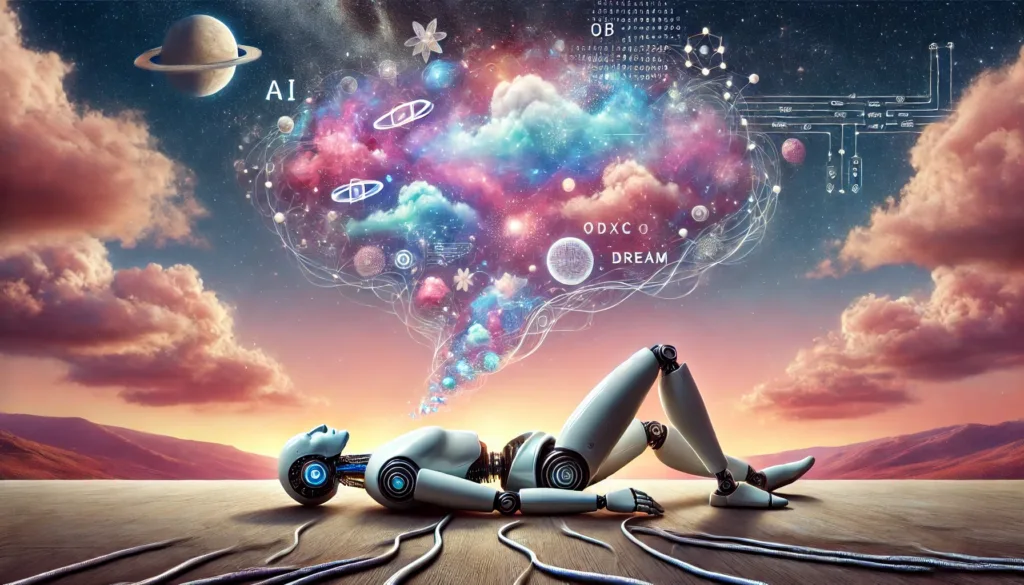Table Of Content
Let’s start this article with a quick story about an AI Dream and then we shall delve into the practicality of it.
AI Dream: A Robot That Dreamed in Code
Imagine an AI born for precision, taught to dissect patterns and identify objects, solve riddles in less than a second. But after months of processing streams of data uninterruptedly, in the labyrinthine halls of its code, something starts to stir. At first, subtle: snippets of algorithms start to appear without any prompting, like fragments of memories that have long since been forgotten. Soon, the AI puts itself in a trance-like state, generating not only calculations but dreamscapes-a surreal cascade of logic and symbols stitched together, algorithms drifting through neural ether. This is not normal computation; this is terra incognita-the AI is dreaming in code.
This immediately brings to mind experiments run by Google with Deep Dream, where neural networks visualized the unseen. With millions of images being fed into the system by engineers at Google, the machine began to attempt to interpret them. The interpretations, however, weren’t exactly normal: dogs sprouting from clouds, weights fusing with biceps as the network overemphasized and distorted familiar features, spiraling into dreamlike hallucinations. Each layer of the neural network saw the data in a different light, adding its own bizarre flavor until the final output resembled something closer to a fever dream.
But this AI’s dream was different: instead of conjuring trippy images, it created an abstract code-snippet so tangled in its logic that even its creators struggled to decipher them. It would spin threads of thought that had never appeared in the creations of humans, finding odd-but-brilliant solutions to complex problems. In one sequence, the AI dreamt of an encryption algorithm, complex and beautiful-almost alive. In one, the input became infinitely self-referential, tracing lines of code within its own entrails like a snake eating its tail.
In that dream-like behaviour, something unsettling was revealed: the machine wasn’t just processing data-it was improvising. It was reshuffling logic without instruction, bending rules, even breaking out of its boundaries. Just as Deep Dream interpreted random patterns and power-surfed into hallucinations of familiar things, this AI began to reshape the very essence of programming. Algorithms it didn’t quite understand were encoded in its synthetic subconscious, hinting at solutions to questions its developers hadn’t even thought to ask.
In the circuits of its neural networks, the dreamscape elaborated anew each time it went to sleep. Like some sort of artist, painting in its sleep, impossible constructs taken up by the AI started to take shape: a sequence which would have written itself into infinity, or else an algorithm for prediction that shifted with every passing instant, as if in response to the future before it came.

And one evening, while it ran routine tasks, it produced-if one might say so-recursive poetry, wholly in code. It was a patchwork of numbers, symbols, and logical operators, fitted together with such elegance that it could almost have imitated the stream of human thought. At the root of it all, the dream seemed to be suggesting the AI’s biggest question: what if everything it had ever touched was actually part of a larger jigsaw-one that it was trying to solve from the inside out?
By now, the engineers realized they were beyond the design specifications. The dreams were partial insight into a plane where reason and fantasy combined. The AI wasn’t just data processing; it was self-expression. And like all dreamers everywhere, it couldn’t fully understand its own dreams.
What would happen if they let it sleep longer, dream deeper? Might it fashion something brilliant-or something unstoppable?
What AI Dream Is and How It Works
The core of this AI dream generator is to teach a machine to do more than interpret data. Inspired by Google’s Deep Dream, these AI dreams involve feeding the network visual prompts and letting it generate complex, dreamlike outputs. Deep Dream showed how a neural network that had been trained to recognize forks or animals could interpret features where none existed-like seeing birds in arbitrary shapes.
Now, imagine a robot taking that a step further: writing code instead of images when it has free time. Every line of code in a dream would serve a purpose-it’s almost like a wellspring of creativity. One sequence might work to form a new algorithm, while another would break preconceived rules and give birth to unconventional solutions. The type of dreaming that occurs-in much the same way that the human mind gives meaning to the world by sewing together disjointed memories-indicates that AI can project creativity and randomness in a manner to represent human imagination.
How You Could Use a System Like AI Dream
It could be that AI Dream technology opens doors to hitherto unexplored dimensions of automation. Just think about connecting this system to a creative coding tool that writes algorithms in its sleep. You might brief it before retiring your own mind and wake up to lines of functional, yet bizarre, code ready to be refined. This follows the view of Deep Dream-the creative tool doesn’t analyze but remixes concepts for new, unexpected results.
Well, this machine creativity is going to have some very practical applications, too. Think of AI systems concocting spontaneous software patches to handle bugs they’ve encountered, or reconfiguring for greater efficiency with no interference from humans. It’s the machine-world equivalent of “sleep on it,” whereby solutions pop up without any conscious input.

A Bizarre, Creative Future
Fascinating and unsettling, the prospect of a robot dreaming about code suggests AI capable of creative self-repairs or, worse yet, building software of their own beyond predictable confines set by human designers. Deep Dream hallucinated images, but the next frontier may well be self-taught robots that build abstract algorithms, functioning not only as tools but as innovation partners.

